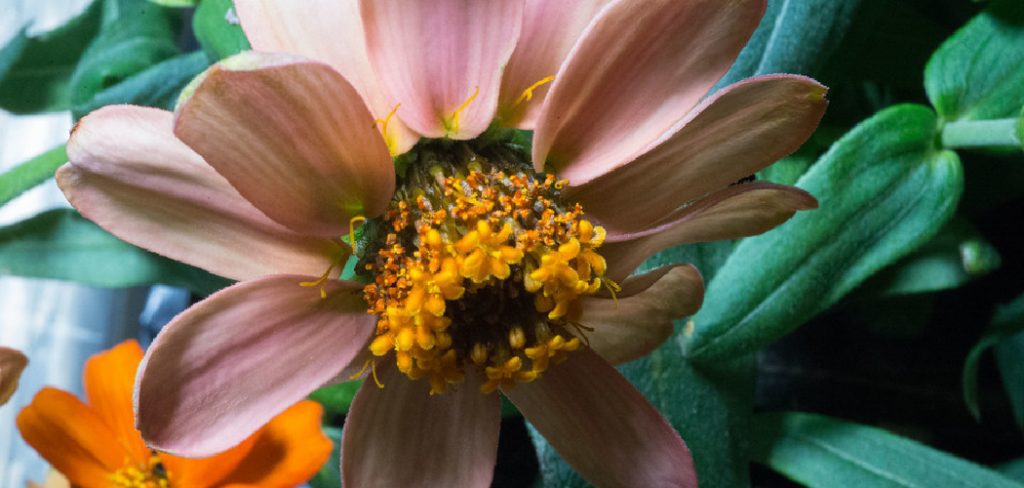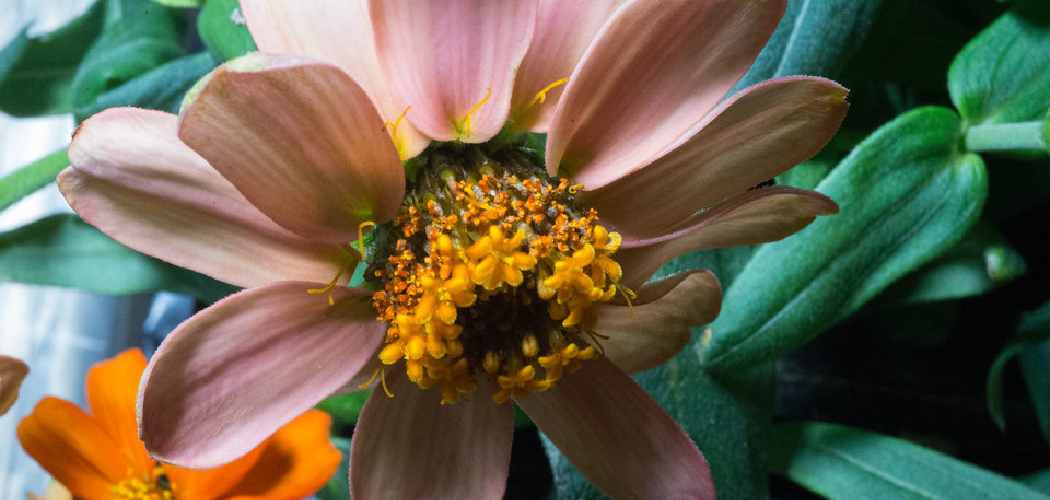To collect zinnia seeds, wait until the flower heads have dried on the plant, then cut them off and place them in a paper bag. Zinnias are vibrant, colorful flowers that bring a cheerful touch to any garden or landscape.
Whether you want to save seeds for future planting or share them with fellow gardening enthusiasts, having a good understanding of how to collect zinnia seeds is essential. By following a few simple steps, you can harvest and store zinnia seeds to ensure a healthy and abundant supply for years to come.

We will discuss the process of collecting zinnia seeds, providing you with the knowledge and confidence to gather and preserve these precious seeds successfully.
How to Collect Zinnia Seeds : Step by Step Guide
Finding The Right Time
When it comes to collecting Zinnia seeds, timing is crucial. You need to wait until the seeds are fully matured before harvesting them for the best results. Zinnia flowers usually produce seeds about 6-8 weeks after blooming, so it’s important to keep a close eye on your plants during this period.
Understanding seed maturity is key. The seeds should be dark in color and fully developed. Additionally, the seedheads should be dry and crispy to touch, indicating that the seeds are ready for collection. Keep in mind that you might have to wait a bit longer if the weather is humid or if it has been raining, as it can delay the drying process. Once the seeds are mature and the seedheads are dry, you can start harvesting your Zinnia seeds.
Preparing For Seed Collection
- Gloves: Wear gloves to protect your hands from prickly stems or thorns.
- Pruning Shears: Use sharp pruning shears to cut the stems cleanly.
- Paper Bags: Carry paper bags or envelopes to hold the seed heads.
- Marker: Label each bag with the variety and date of collection.
- Vibrant Blooms: Look for plants with vibrant and healthy blooms.
- Strong Stems: Choose plants with sturdy stems and foliage.
- No Signs of Disease: Avoid plants that show signs of disease or insect damage.
- Wait for Flower Maturity: Allow the flower to fully mature and the petals to dry out.
- Seeds in Center: Check the center of the flower for developed seeds.
- Collect Seed Heads: Cut the seed heads and place them in the paper bags.
- Drying and Storage: Store the paper bags in a cool, dry place to allow the seeds to further dry.
Harvesting Zinnia Seeds
To collect zinnia seeds, start by removing the seedheads from the plant. Choose seedheads that are fully matured and dry. Gently twist or cut them off, ensuring you don’t damage the seeds. Place the seedheads in a paper bag or envelope to catch any seeds that may fall during the process.
Next, it’s time to extract the seeds from the seedheads. Hold a seedhead over a clean, dry surface and rub or gently crush it between your fingers. This will release the seeds, which will separate from the chaff. Alternatively, you can place the seedheads in a sieve or colander and gently shake it to loosen the seeds.
Once you have extracted the seeds, it’s important to clean them. Remove any remaining chaff or debris by gently blowing on the seeds or using a fine mesh sieve to separate them. Afterward, store the cleaned seeds in a cool, dry place in a labeled envelope or jar until you’re ready to plant them.
Storing Zinnia Seeds
When it is time to collect zinnia seeds, it is essential to know how to properly store them to ensure their longevity for future use.
One crucial step in the storing process is drying the seeds. After harvesting the seeds from the zinnia plants, spread them out on a flat surface to dry for about a week. This allows the seeds to fully mature and ensures their viability when planted.
Another important consideration is to choose an appropriate storage container. Look for containers that are airtight and moisture-proof to prevent the seeds from getting exposed to external elements that can diminish their quality.
To further protect the seeds, it is vital to create an ideal storage environment. Store the seeds in a cool, dry place away from direct sunlight. This helps to maintain their potency and prevents premature germination.
By following these steps and taking proper care, you can collect and store zinnia seeds successfully for future gardening endeavors.
Seed Viability And Germination
Testing the viability of zinnia seeds before planting is essential to ensure a successful germination rate. To determine if your seeds are still viable, perform a simple germination test. Take a sample of seeds and place them on a damp paper towel or cotton pad. Keep the seeds moist and warm for a period of 5-7 days, checking regularly for signs of germination. If a high percentage of seeds sprout, they are considered viable and ready for planting.
Once you have tested the seed viability, pre-germination treatments can help improve germination rates. Soaking zinnia seeds in water overnight can soften the hard outer coating, facilitating quick germination. Another option is to scarify the seeds by gently scratching the surface with sandpaper or a file to break through the tough outer layer. These treatments help the seeds absorb water and nutrients more easily.
When planting zinnia seeds, it is important to provide optimal conditions to maximize germination rates. Ensure the soil is well-draining and loose, as zinnias do not like wet feet. Plant the seeds at the appropriate depth, usually 1/4 inch deep, and space them according to the variety’s requirements. Keeping the soil consistently moist but not overly wet will aid in germination. Provide adequate sunlight, as zinnias thrive in full sun.
Troubleshooting
| Problem | Solution |
|---|---|
| Preventing Mold and Fungal Growth | Ensure proper air circulation by spacing plants adequately. Remove any dead or decaying plant material. Keep the seeds in a cool and dry area. Consider using a fungicide if necessary. |
| Addressing Pest Infestations | Regularly inspect the plants for pests. Use organic insecticides or repellents to discourage pests. Remove any infested plants or parts to prevent spreading. Consider companion planting to deter pests. |
Note: Taking preventive measures is essential to ensure a successful seed collection process. By being proactive and addressing common problems such as mold, fungal growth, and pest infestations, you can improve the quality of your zinnia seeds and increase the chances of a successful harvest.
Frequently Asked Questions Of How To Collect Zinnia Seeds
When Should You Harvest Zinnia Seeds?
Harvest zinnia seeds when the petals have faded and dried. Gently remove seedheads and allow them to fully dry indoors. Once dry, collect the seeds and store them in a cool, dry place for future planting.
Can I Just Scatter Zinnia Seeds?
No, you cannot just scatter zinnia seeds. For successful growth, carefully follow planting guidelines.
What Month Is Best To Sow Zinnia Seeds?
Zinnia seeds are best sown in the month of April for optimal growth and blooming.
How Do You Collect Zinnia Seeds?
To collect zinnia seeds, allow the flowers to fully mature and dry on the plant. Once the flower heads turn brown and crispy, cut them off and place them in a paper bag. Shake the bag gently to release the seeds from the dried flower heads.
Conclusion
Collecting zinnia seeds is a simple and rewarding process that allows gardeners to preserve the beauty of these vibrant flowers year after year. By following the techniques outlined in this blog post, you can ensure a successful harvest and abundant seed supply.
Remember to store the seeds properly and label them for future use. Happy gardening!

